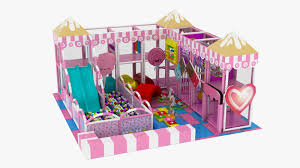
Exploring the Wonders of Indoor Adventures
The Benefits of Indoor Play for Children
Indoor play is not just a way to keep children entertained on rainy days; it also offers a host of benefits for their development and well-being. While outdoor play is important for physical health, indoor play provides unique opportunities for learning and growth.
Stimulates Creativity
Indoor play allows children to engage in imaginative activities that can stimulate their creativity. From building forts with cushions to putting on a puppet show, indoor play encourages children to think outside the box and explore new ideas.
Enhances Problem-Solving Skills
Many indoor games and activities require children to solve puzzles, follow instructions, or come up with strategies to win. This helps them develop critical thinking and problem-solving skills that are essential for success in school and later in life.
Promotes Social Interaction
Indoor play often involves playing with siblings, friends, or parents, which helps children develop social skills such as sharing, taking turns, and communicating effectively. These interactions are crucial for building relationships and forming bonds with others.
Fosters Emotional Development
Through indoor play, children can express their emotions in a safe environment. Whether they’re acting out a scene from their favourite movie or playing dress-up to explore different roles, indoor play allows children to understand and regulate their feelings.
Encourages Physical Activity
While outdoor play is ideal for physical exercise, indoor play can also offer opportunities for movement and activity. Dancing, yoga, or even playing active video games can help children stay active even when they’re stuck indoors.
In conclusion, indoor play is an essential part of every child’s development. By providing a stimulating environment that encourages creativity, problem-solving, social interaction, emotional expression, and physical activity, parents can help their children thrive both mentally and physically.
Seven Benefits of Indoor Play: Safety, Creativity, and Learning for Children
- Provides a safe environment for play
- Offers opportunities for creative activities
- Allows children to play regardless of weather conditions
- Encourages social interaction with peers and family members
- Promotes learning through educational games and activities
- Helps develop problem-solving and critical thinking skills
- Can be a convenient option for busy or working parents
Three Drawbacks of Indoor Play: Space Constraints, Screen Time Surge, and Health Hazards
- Limited space for physical activity compared to outdoor play.
- Potential for increased screen time if indoor play involves electronic devices.
- Indoor environments may have more germs and allergens, leading to potential health concerns.
Provides a safe environment for play
Indoor play provides a safe environment for children to explore, learn, and have fun without the risks associated with outdoor play. With soft play areas, padded surfaces, and secure boundaries, indoor spaces offer parents peace of mind knowing that their children can engage in activities without the dangers of traffic, extreme weather conditions, or rough terrain. This safety allows children to freely experiment, interact with others, and develop their skills in a protected setting.
Offers opportunities for creative activities
Indoor play offers a wealth of opportunities for creative activities that can ignite a child’s imagination and nurture their artistic flair. From crafting and painting to building intricate structures with blocks, children have the freedom to explore their creativity in a safe and comfortable environment. Engaging in creative pursuits indoors allows children to express themselves freely, experiment with different materials, and develop their unique artistic style. These activities not only provide hours of entertainment but also help children build confidence, problem-solving skills, and a sense of accomplishment as they bring their imaginative ideas to life.
Allows children to play regardless of weather conditions
Indoor play provides a valuable advantage by allowing children to engage in activities regardless of the weather conditions outside. Whether it’s raining, snowing, or too hot to play outdoors, children can still have fun and stay active indoors. This flexibility ensures that children have consistent opportunities for play and learning, no matter what the weather may be like, promoting their overall well-being and development.
Encourages social interaction with peers and family members
Indoor play provides a wonderful opportunity for children to engage in social interaction with their peers and family members. Whether playing board games, putting on a puppet show, or simply chatting and laughing together, indoor activities foster communication, teamwork, and bonding among children and their loved ones. These interactions not only strengthen relationships but also help children develop important social skills such as empathy, cooperation, and conflict resolution. By encouraging social engagement in indoor settings, children can build lasting connections and create cherished memories with those around them.
Promotes learning through educational games and activities
Indoor play offers a valuable opportunity to promote learning through educational games and activities. By engaging in puzzles, board games, and interactive toys, children can enhance their cognitive skills, problem-solving abilities, and knowledge in various subjects. These educational experiences not only stimulate curiosity and critical thinking but also make learning fun and engaging for children, helping them develop a lifelong love for learning.
Helps develop problem-solving and critical thinking skills
Indoor play provides an excellent opportunity for children to develop problem-solving and critical thinking skills. Whether they are figuring out a challenging puzzle, planning a strategy for a board game, or creating a structure with building blocks, indoor activities encourage children to think logically, analyse situations, and come up with creative solutions. These skills are essential for academic success and navigating real-life challenges, making indoor play a valuable learning experience for children of all ages.
Can be a convenient option for busy or working parents
Indoor play can be a convenient option for busy or working parents who may not always have the time or flexibility to take their children outdoors. With indoor play spaces often located in easily accessible areas and offering extended hours, parents can rely on these facilities to provide a safe and engaging environment for their children while they attend to their work or other responsibilities. This convenience allows parents to balance their busy schedules while ensuring that their children still have opportunities for play, learning, and social interaction.
Limited space for physical activity compared to outdoor play.
One significant drawback of indoor play is the limited space available for physical activity in comparison to outdoor play. While outdoor environments offer vast areas for running, jumping, and exploring, indoor spaces can sometimes feel confined, restricting children’s ability to engage in large-scale physical activities. This limitation can impact children’s overall health and well-being, as they may not have the same opportunities to develop their gross motor skills or expend their energy fully within the constraints of indoor settings. Parents and caregivers should be mindful of this con and seek ways to incorporate outdoor play or creative indoor activities that promote movement and exercise to ensure a balanced approach to their child’s physical development.
Potential for increased screen time if indoor play involves electronic devices.
One significant con of indoor play is the potential for increased screen time if children engage in activities that involve electronic devices. Excessive screen time can have negative effects on children’s physical health, mental well-being, and social development. It may lead to sedentary behaviour, eye strain, disrupted sleep patterns, and reduced face-to-face interactions with others. Parents and caregivers should be mindful of balancing screen time with other forms of play to ensure that children have a well-rounded and healthy play experience indoors.
Indoor environments may have more germs and allergens, leading to potential health concerns.
Indoor environments may harbour a higher concentration of germs and allergens compared to outdoor spaces, posing potential health risks for children and adults alike. Dust mites, pet dander, mould spores, and other allergens can accumulate in indoor settings, triggering allergic reactions and respiratory issues. Additionally, close proximity to others in enclosed spaces can facilitate the spread of germs and viruses, increasing the likelihood of illnesses such as colds and flu. It is important to maintain good hygiene practices and proper ventilation in indoor areas to minimise the impact of these health concerns.



